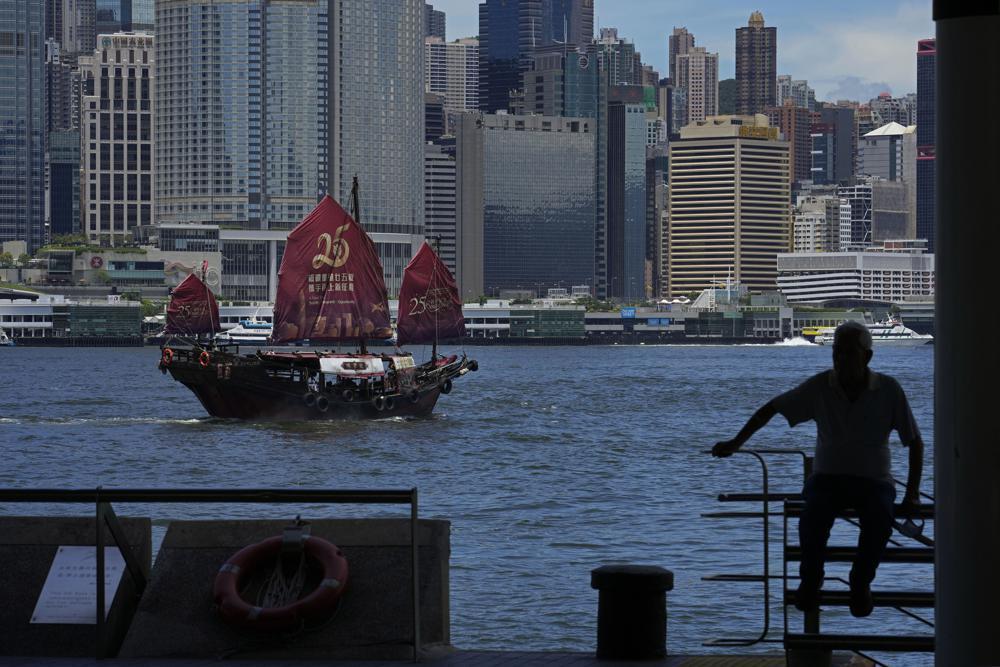
Every few generations, Hong Kong transforms itself, evolving from a swampy fishing village to 19th century colonial port, to capitalist outpost and factory after China’s 1949 revolution, to 21st century financial center.
As the former British colony marks the 25th anniversary of its return to China, reeling from pandemic curbs that devastated business and a crackdown on its pro-democracy movement, Hong Kong leaders say it is time to transform again. They say the city should become a leader in technology that relies more on its ties with nearby Chinese factory cities than on global trade.
Chief Executive-elect John Lee’s government is under pressure to generate new sources of economic growth, looking beyond COVID outbreaks and anti-virus controls that have devastated tourism and business and uncertainty about the legal climate after a crackdown on the city’s pro-democracy movement.
In April, during his election campaign, Lee promised to “start a new chapter” for the city better known as one of Asia’s busiest ports and biggest stock markets and “strengthen its competitiveness” in technology and innovation as well as trade and finance.
Lee gave no details but pointed to the Greater Bay Area, a Chinese government initiative to link Hong Kong with neighboring mainland cities including the technology and finance hub of Shenzhen and the manufacturing powerhouses of Dongguan and Foshan.
“There are great opportunities in the Greater Bay Area that haven’t been realized yet,” said David Graham, executive director of the British Chamber of Commerce in Hong Kong. “It is a big opportunity for Hong Kong, and it will be very hard to replicate in other cities like Singapore or Dubai.”
Adding to the urgency for Lee to roll out a long-term strategy, executives frustrated with Hong Kong’s travel controls are leaving the city, business groups say. Some companies are moving for good to Singapore, Bangkok, Dubai or other business centers.
“Hong Kong’s strength as a global connector has been greatly reduced,” said Joseph Armas, chairman of the American Chamber of Commerce in Hong Kong. Executives have left for cities where “travel is feasible.”
Hong Kong lost nearly 90,000 of its 7.5 million population in 2021, according to government figures. More than 100,000 people left in February and March of this year, during the city’s worst COVID wave.
Hong Kong’s status as a global hub for trade and business center is also waning.
One in 20 companies surveyed by the American Chamber of Commerce in Hong Kong plan to move their global or regional headquarters out of Hong Kong, the chamber reported in January.
Two out of five companies surveyed said they worry they will lose free internet access, vital for a trading center that relies on the flow of information.
Hong Kong thrived as the trade gateway to China for decades, but it was eclipsed as the world’s busiest container port in 2000 by facilities in the Chinese mainland. Two decades later, with cargo volume barely 10 percent above its 2000 level, Hong Kong’s port ranks 8th in the world. Shanghai, Shenzhen and three other Chinese ports are bigger.
Hong Kong’s stock market, once Asia’s biggest outside Japan, also has grown steadily but has slipped behind regional rivals. Companies traded in Hong Kong have a total market value of $5.4 trillion, compared with $8.2 trillion for the Shanghai Stock Exchange.
Kurt Tong, a former U.S. consul general in Hong Kong who is managing partner of The Asia Group, a consulting firm, is among those who believe Hong Kong’s recent setbacks are only temporary.
“The current status is that Hong Kong is a very significant global center, one of the most important in the world, and it plays a unique and critical role in linking the Chinese economy with the rest of the global economy and channeling finance in both directions,” said Tong.